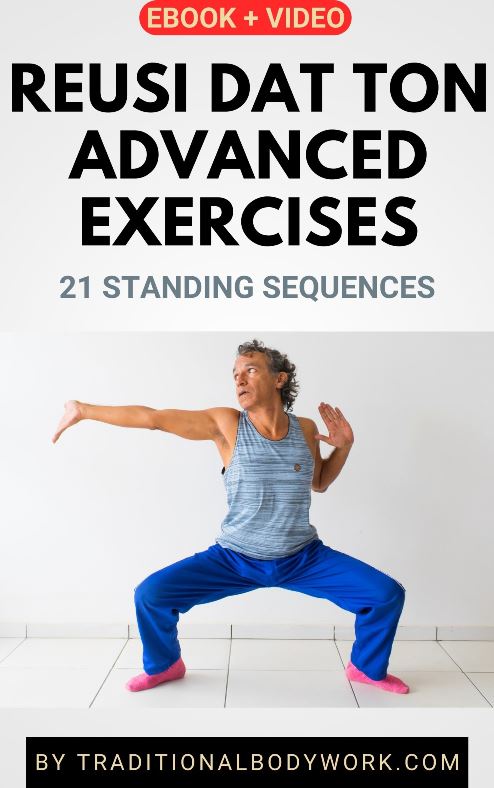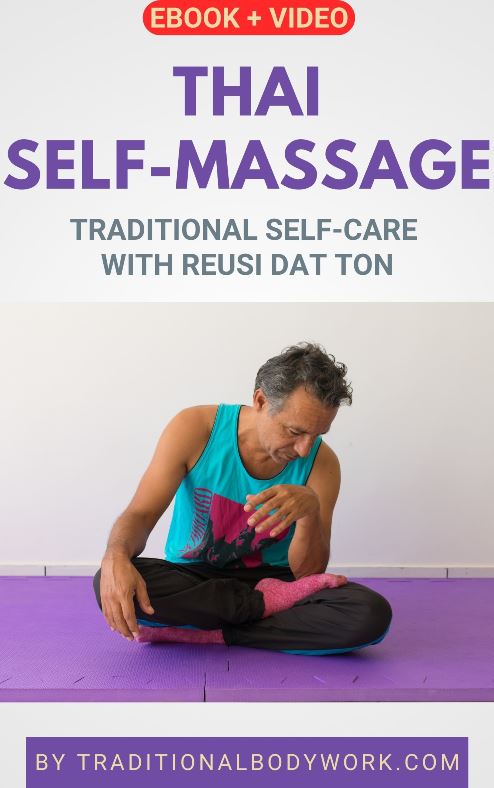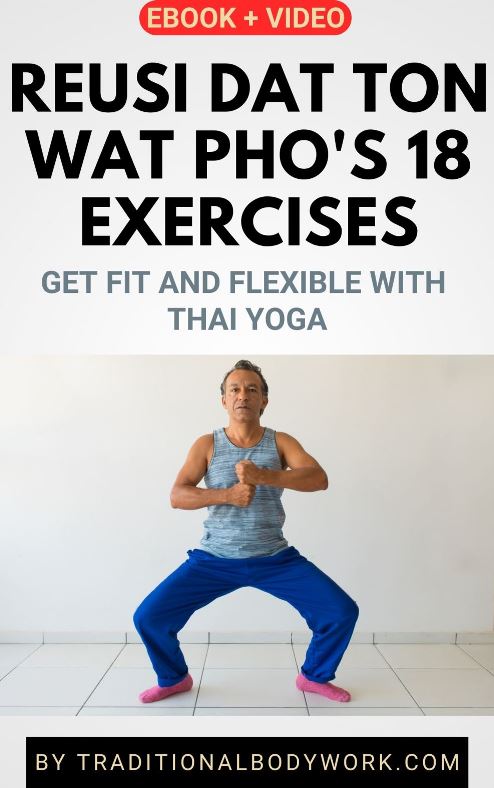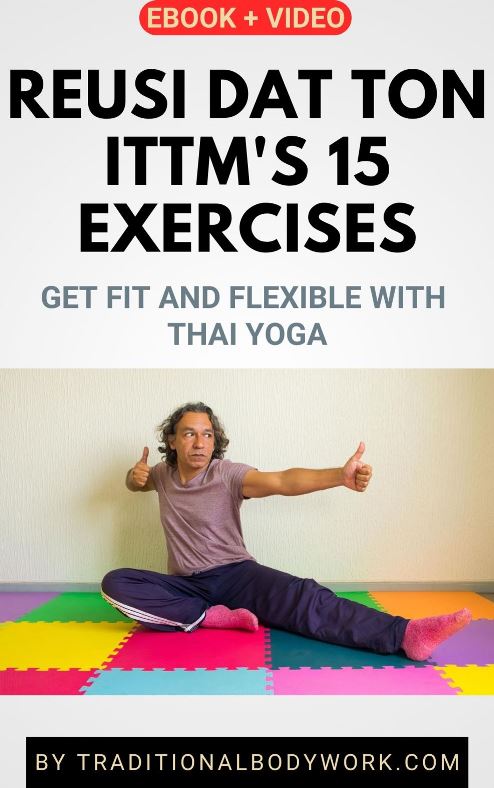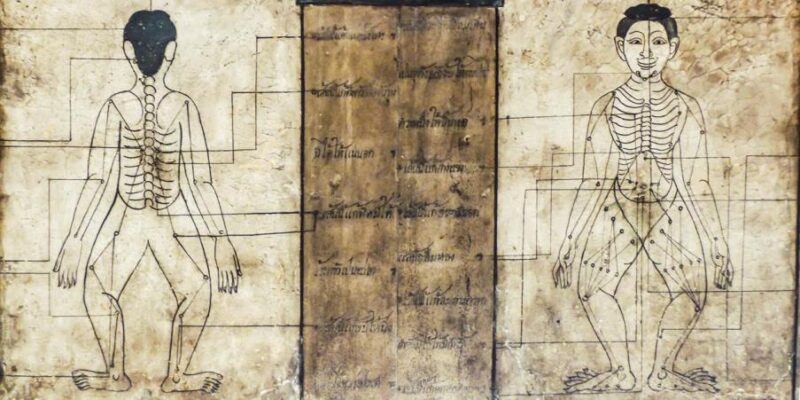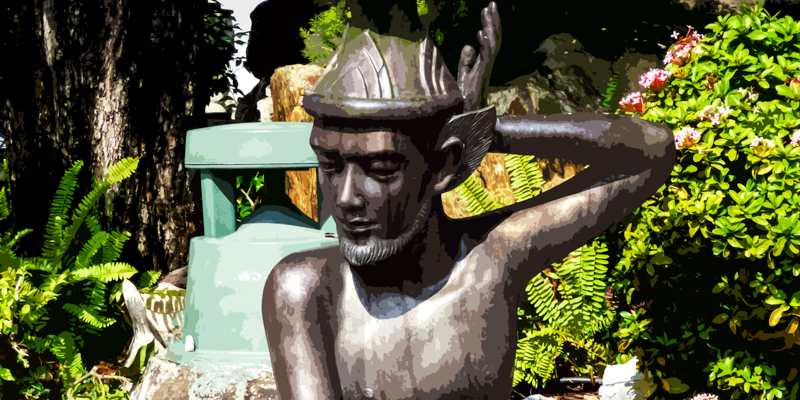
When it comes to the way of breathing while doing Thai Yoga Reusi Dat Ton exercises (Rusie Datton or Rue-Si Datton), you’ll find a lot of varieties and ideas circulating among practitioners and teachers.
Interesting enough, the Wat Pho teachers (from the Wat Pho Medical Massage School in Bangkok, Thailand), when instructing Reusi Datton, don’t breathe at all. I mean, of course they breathe, but they breathe normally, disconnected from the exercises. No stress is put on a certain breathing technique while doing an exercise.
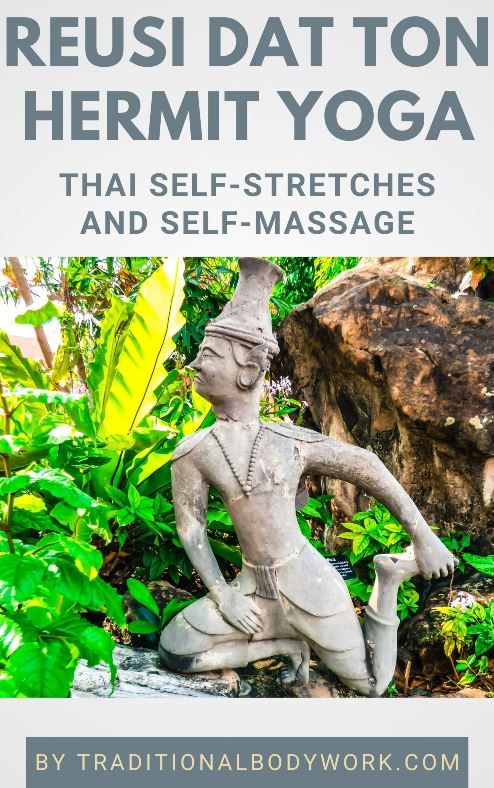
This is rather strange, to say the least, because in the official Reusi Datton Wat Po text-books breath and breathing is certainly addressed and rather essential. But when I asked a Wat Pho teacher why breathing techniques aren’t taught, she told me that they had bad experiences with some students i.e. dizziness, falling down, hyperventilating, and so on. So subsequently, Wat Pho stopped teaching the breathing part of Reusi Datton.
I can understand Wat Pho’s decision, and it’s wise enough, but it does take away an essential aspect of the rationale behind Reusi Datton. The fact is that the “official” (historical) way of doing Reusi Datton is that you will inhale through the nose before or while going into a pose, hold the pose for several seconds, and then exhale (through the mouth) when coming out of the pose to the initial position.
Breathing in deeply and using the breath is deemed important because it’s thought to encourage the firm push and strong flow of Prana (Lom Pran), that is, Life Energy, through the Thai Sen Energy Lines, and with that nurturing the body optimally.
Nevertheless, teachers and schools that use a breathing technique vary widely in the way they think breathing should be done.
Examples of Breathing Techniques
Let’s take a look at some examples of breathing variations used with Rue-si Dat Ton:
- Inhale (deeply or normally) into the abdominal area (diaphragmatic belly breathing) then press the air inwards and then start the exercise or inhale in this manner while going into the exercise.
- Inhale (deeply or normally) into the abdominal area (diaphragmatic belly breathing), fill up the chest cavity and then press the air downwards to the abdominal area keeping strength and tension there and then start the exercise or inhale in this manner while going into the exercise.
- Inhale (deeply or normally) into the abdominal area (diaphragmatic belly breathing), without filling up the chest cavity and then press the air downwards to the abdominal area keeping strength and tension there and then start the exercise or inhale in this manner while going into the exercise.
- Inhale (deeply or normally) into the exercise while doing normal belly breathing (without strength or power put in the abdominal area).
- Inhale (deeply or normally) into the chest area expanding it and then start the exercise or do this while going into the exercise.
- Breathe normally while not specifically coordinating with the exercise.
So, as you can see, there are quite some variations of breathing like, for instance, abdominal or chest breathing, inhaling very deeply or in contrast more shallow, hold the breath before starting the exercise or in contrast inhaling while starting the exercise, how long to stay in the pose without exhaling yet, and so on.
Mind that there are practitioners and teachers who claim that one should never take/hold/press breath into the chest cavity. It’s said that by doing so, one will compress the organs in the chest, most notably the heart, which is considered dangerous perhaps leading to injury or disease.
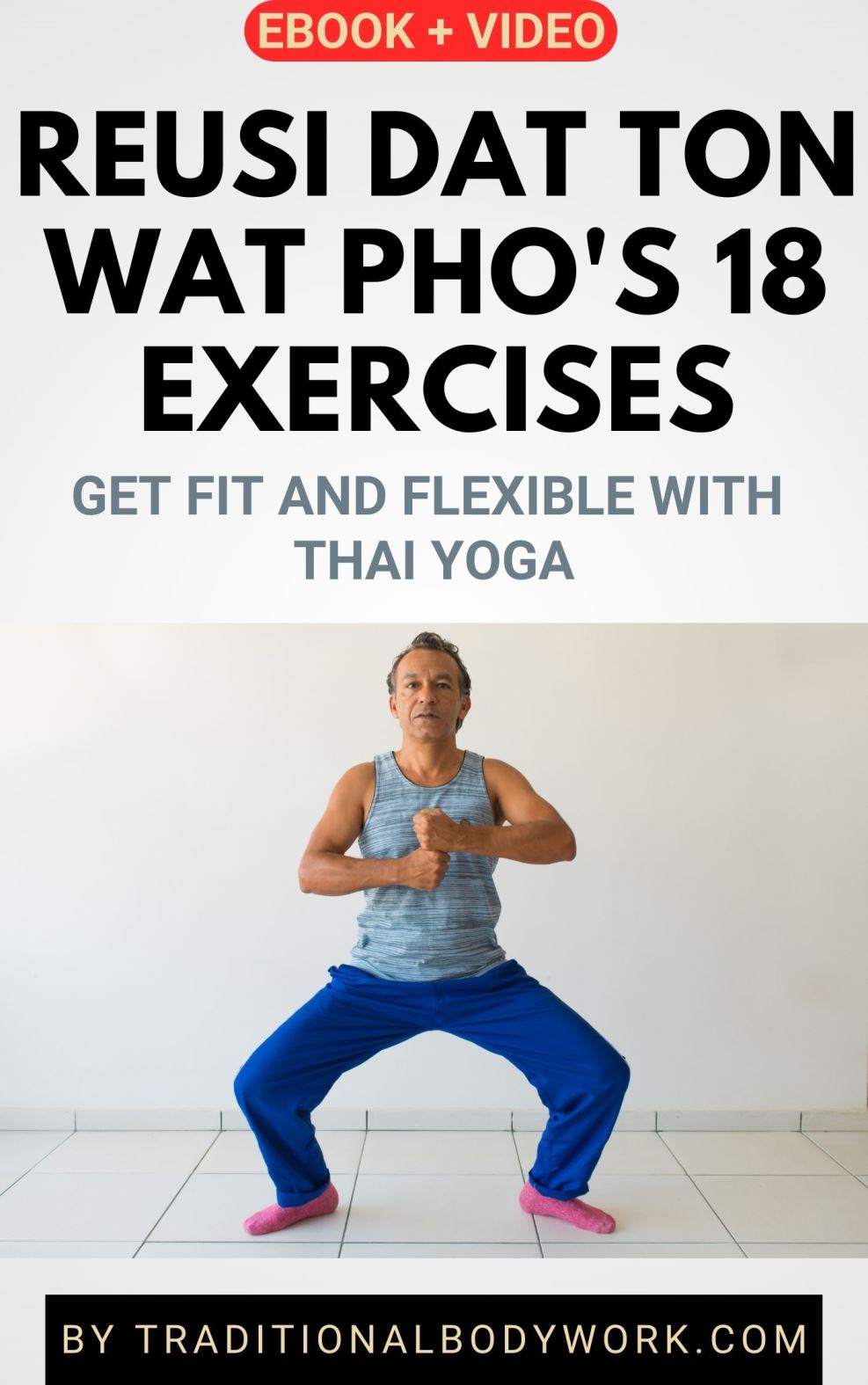
Thus, quite a topic, and quite some confusion. I will not be the one to give definite advice on this one. Things also depend on the student. Perhaps especially in the beginning when starting with Reusi Datton it’s best not to accompany or coordinate the exercises with a breathing technique and just breathe normally (like the Wat Pho teachings).
If you are already experienced with various breathing techniques, you’re of course welcome to pick a technique and do what feels best and gives the best results for you.
In any case, I advise you to ask a physician or other professional in the field if specific breathing techniques may be harmful for you. Also, if you have chosen a technique and start to feel dizzy or lightheaded while doing the exercise, please stop using that technique.
Mind that breathing too quickly, too deeply or irregularly can result in hyperventilation and symptoms such as dizziness, faintness, headache, lightheadedness, visual disturbance, tingling, chest pain, palpitations, sighing, yawning and excessive sniffing. Most of the time you can avoid this by breathing more slowly and/or less deeply.
How I Breathe Doing Reu-Si Datton
In the initial position of a Reusi Datton exercise, before actually starting with it, I slowly and normally belly breathe in through the nose, that is, diaphragmatic abdominal breathing which will make the abdominal rise/come out.
Next, on maximum inhalation, I hold my breath giving focus and power to the diaphragm while pressing the breath into the abdominal area (the diaphragm will go down slightly).
At this point I will also engage the pelvic floor, that is I will contract, squeeze, lift and hold the pelvic floor muscles, including the muscles around the anus and perineum.

Still holding my breath, I immediately start doing the exercise moving/going to the maximum position/range of motion/stretch. I stay three seconds in the pose while still holding my breath.
Then I release the breath (I exhale) forcefully through the mouth while simultaneously returning to the starting position of the exercise.
In the starting position, I belly breathe normally in and out until I regain normal breathing. Sometimes I even chest breathe if I really need to catch some extra air. Only when I breathe normally again, I start doing another repetition or exercise.
This particular breathing cycle of inhaling, pressing the breath into the abdominal area, breath retention, and engaging the pelvic floor while doing a Reusi Dat Ton exercise (and afterwards forcefully exhaling) is actually an ancient Tibetan Breathwork technique, better known as Tummo Breathing aka Vase Breathing.
As said, this is the way I do it. Please don’t see this as a rule. You can see this breathing technique explained by my Reusi Datton teacher Master Kong in the YouTube video The Lost Yoga: Ruesi Datton (Thai Yoga).
Info on Abdominal Diaphragmatic Breathing
There’s lots of information to be found on the internet about abdominal breathing. I give you two reference links: University of Georgia – Department of Psychology and
University of Saskatchewan


